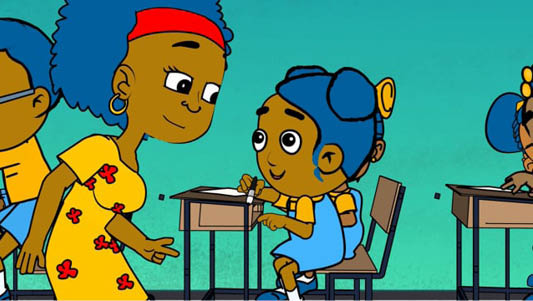Teacher Resources
Introduction
 Lakou Kajou’s Tips for Teachers: Integrating Social-Emotional Learning into the classroom is a series of short videos (each two minutes or less) with motivational messages to help teachers create a positive climate for students and to promote social-emotional learning in their classrooms.
Lakou Kajou’s Tips for Teachers: Integrating Social-Emotional Learning into the classroom is a series of short videos (each two minutes or less) with motivational messages to help teachers create a positive climate for students and to promote social-emotional learning in their classrooms.
Social-emotional learning is a process of developing the ability to manage emotions, establish quality relationships with others, and make responsible decisions for life. Research shows that children who can identify and regulate their emotions are better able to integrate into society and are better prepared for the future. It’s important that we teach social-emotional learning in schools, as it is as crucial as reading, math and other academic subjects.
Good social-emotional skills help children learn and develop in all aspects of their lives. Teachers can do a lot each day to help children gain these skills that will serve them well their whole lives.
Summary of techniques

When students arrive at school, greet them individually, with a big smile and a lot of positive energy as they enter the classroom.
Each day, write an inspirational message on the chalkboard to promote social-emotional learning.
When you give students a job to complete in the classroom, they feel valued, they develop a sense of accountability and contribute to the class community (and it also helps keep the classroom in good order!).
Use a ball that children pass around to each other to help students learn when they can talk and when they need to listen to someone else.
It’s important to circulate throughout the classroom frequently. When you do so, engage with students and take time to get down to the eye level of individual students.
When children return from recess, often they have a lot of energy. You can use simple transition activities to calm students.
When students are feeling strong emotions, remind them to breathe in and out slowly to calm them down.
When children sit for a long time and start to lose their concentration, you can use a movement activity to provide a little energy.
Give students the chance to take a leadership role by leading game activities, transition activities, or other classroom routines.
Encourage children to understand and manage their emotions, trust themselves and make good decisions.
Growth mindset is a way of thinking that helps students develop abilities, skills, and intelligence, through persistence (practice), positive strategies and asking for the help of others when necessary.
How to use these videos
Each of the eleven videos in the series focuses on a different theme that connects with a specific aspect of social-emotional learning that can be integrated into teaching. The videos should be used as a supplemental resource to support training programs designed to help teachers promote social-emotional learning in their classrooms. Trainers may wish to show the videos during training sessions and/or send them to participants as “refreshers” after a training session.
Lakou Kajou’s Tips for Teachers












